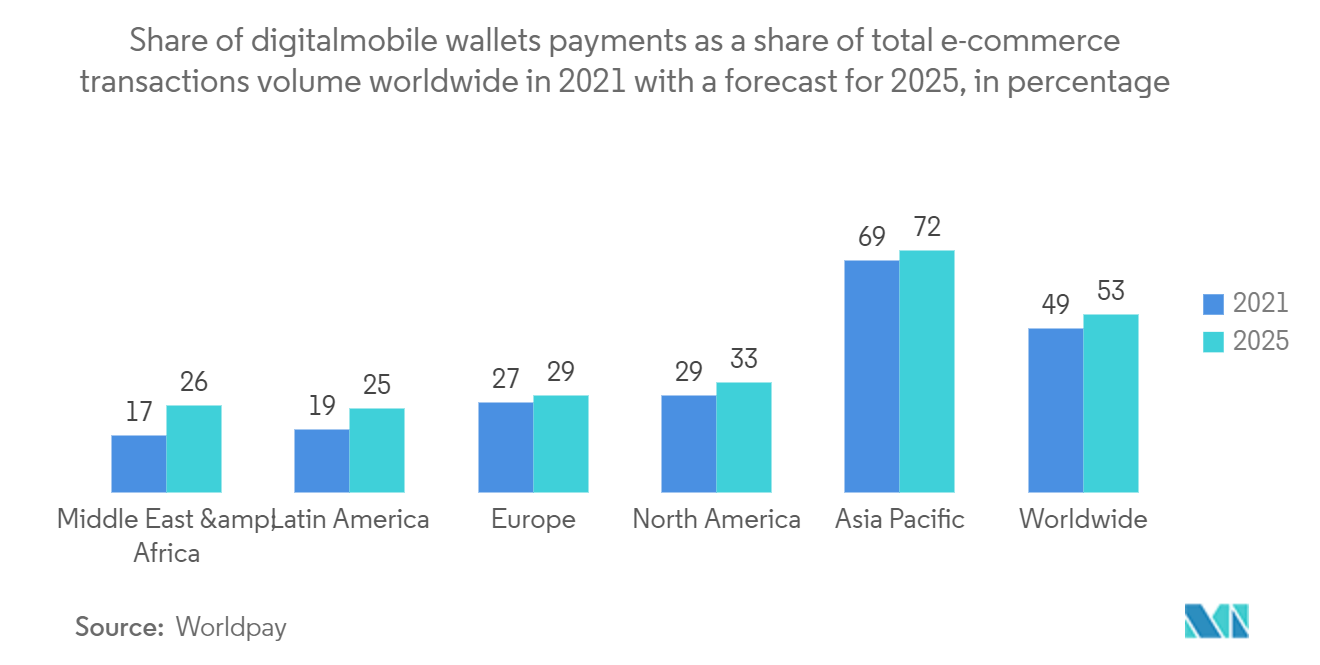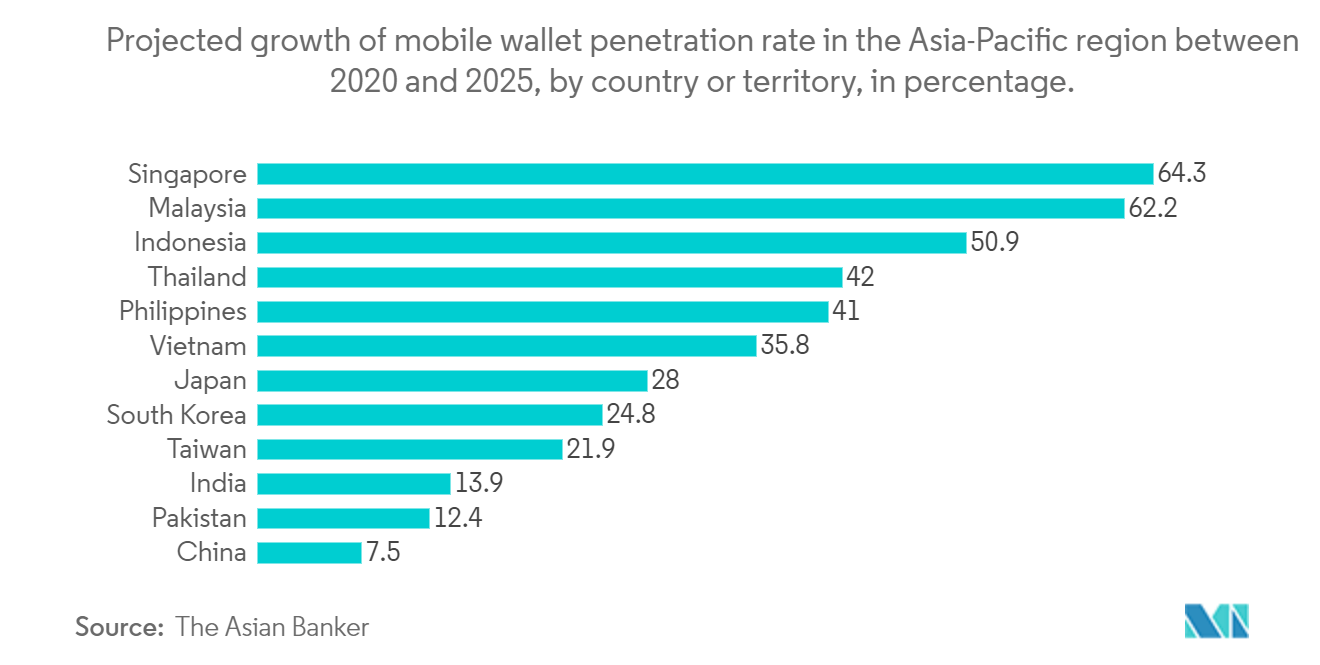Market Trends of Mobile Wallet Industry
This section covers the major market trends shaping the Mobile Wallet Market according to our research experts:
Proximity Payments to Witness the Fastest Market Growth
- Although there are various proximity-based, payment-based mobile wallets available in the market, including NFC, UHF, MST, and location-based payments, among others, near-field communication, QR, and magnetic secure transmission are the leading technologies driving the market.
- NFC solutions enable users to seamlessly integrate existing payment cards through mobile phones, and the activation of payment services adds convenience and assured security. Even so, it makes contactless payments via wearables by leveraging tokenization. Also, it integrates with vending machines.
- Also, its low processing fees will help retailers achieve cost and operational efficiency and obtain data opportunities and loyalty, which could be used to improve customer relations. For instance, all the major mobile wallet vendors, such as Apple Inc., Google LLC, and Samsung Corporation, utilize NFC technology on their mobile wallets.
- Further, the trend will taper off as technology spreads among younger users. Gen Z, in particular, is expected to fuel growth as it obtains spending power. Baby boomers will continue to gravitate toward mobile wallets in tandem with increases in total digital adoption, partly due to the pandemic and partially because younger family members are encouraging them to do so.
- In an emerging market such as India, most smartphones do not come equipped with NFC technology, and people instead rely on the Unified Payment Interface (UPI) developed by the National Payments Corporation of India based on QR codes.
- Additionally, the acceptance of digital wallets continued undoubtedly in the last year, thanks to the alternatives that Apple Pay, Google Pay, and other critical mobile payment providers offered. The creation of digital wallets has been essential in providing a better, more practical, and frictionless payment procedure for individuals and, increasingly, businesses of all sorts. Accordingly, it is predicted that by the current year, 4.4 billion users worldwide will shop using a digital wallet, making up 52% of all e-commerce payments. Additionally, 1.6 billion consumers worldwide will make 30 percent of all POS payments using digital wallets in the current year.

Asia-Pacific to Witness the Fastest Market Growth
- China has always been a major player in the mobile economy, leveraging its fintech firms to enable cashless payments across the country until recently. Southeast Asia is on the rise, owing to its strong economic growth and increased smartphone penetration.
- Also, the traditionally cash-reliant economy is leveraging the host of vendors in the region, such as ride-rentals, remittance firms, fintech startups, and banks, to provide people in Southeast Asia greater access to e-wallets, microloans, and insurtech products through smartphones. For instance, according to Forbes, Indonesia is one of the most mobile-first countries in the world, with 95% of internet users reported as mobile users.
- According to a Google, Temasek, and Bain & Company report, the Southeast Asia digital payment industry is projected to grow the gross transaction volume from USD 600 billion in 2019 to USD 1.1 trillion by 2025, with e-wallets sharing USD 22 billion in 2019 and USD 114 billion in 2025.
- At 59.9%, China now has the highest smartphone usage rate worldwide. India follows with a 43.5% utilization rate. The use of e-wallets is widespread in these nations. They are currently at the forefront of the payment revolution by providing security and convenience for payment processing. eWallets combine encryption, biometrics, tokenization, and device authentication via mobile applications, primarily driven by key players Alipay and WeChat, redefining the future's potential.
- Contactless payments are growing in acceptance as mobile commerce and digital wallets become more common. According to a recent study, nearly half of the 3,000 consumers polled used their smartphones to pay in-store at Starbucks (49%), McDonald's (43%), and Walmart (41%). Most contactless payments will be powered by hardware equipped with near-field communication (NFC) technology instead of app-based or digital wallet transactions. This includes card readers and cell phones with NFC capabilities. The infrastructure for NFC point-of-sale (POS) terminals must be purchased and set up by retailers, which incurs additional costs not present in soft POS systems, which are smart devices that contain both NFC and payment data.


